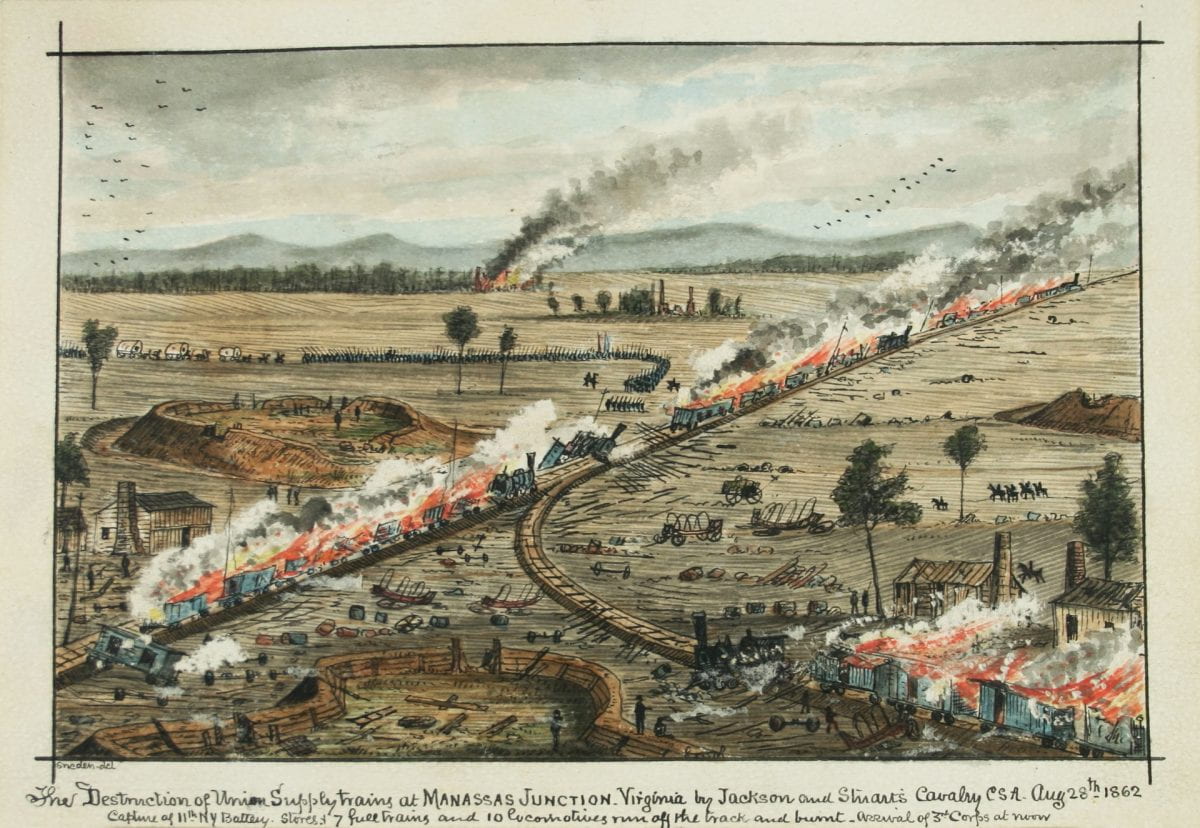By Elizabeth Miller
M.A. ’22, Museum Studies
This detailed watercolor depicts the destruction of Union supply trains at Manassas Junction, Virginia after the Second Battle of Bull Run by Confederate Major General Thomas “Stonewall” Jackson and his troops. The supply train full of clothing, tents, ammunition, and vast amounts of food was to be sent to Union Major General John A. Pope. The Confederate soldiers consumed part of the food and carried away as much as they could. Before leaving, they burned the railroad locomotives and cars, and heated and twisted the railroad ties into knots, so they could no longer be used.
The watercolor was drawn and painted by Private Robert Knox Sneden, an American landscape painter and map-maker for the Union Army, who witnessed the trains’ destruction first hand. He described the cars as being “covered with half-burnt barrels, boxes, and dirty clothing, which the rebels had exchanged for new clothes…” Sneden continued, “the wreck of the trains laid on the track: nothing but the wheels and other ironwork having escaped the burning. The whole Railroad track smoked for 1,000 yards, from the smoldering fire.”
Throughout the war, Sneden kept a diary and created more than 800 pencil and ink drawings of scenes he had witnessed. He would periodically mail his drawings back home to New York City. While Sneden spent five years captured in Confederate prisons, he made shorthand diary entries and sketches. He would sew the sketches into his hat, coat, and shoes, to keep them hidden from guards. After the war, Sneden went over his drawings, adding details and color to them. Sneden was able to write a five-volume memoir of his experience in the war, based on his diary entries.
Visit the museum’s collections website to learn more.

